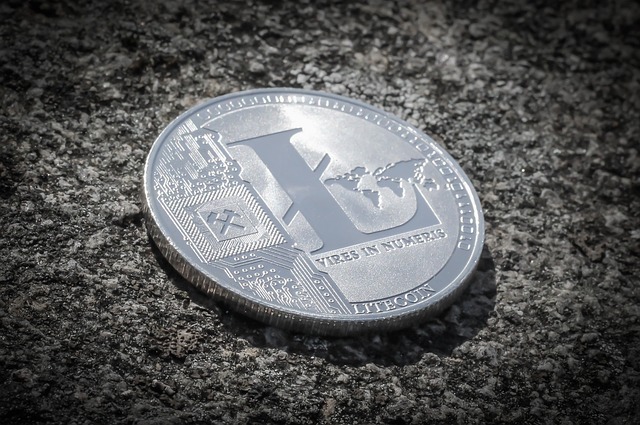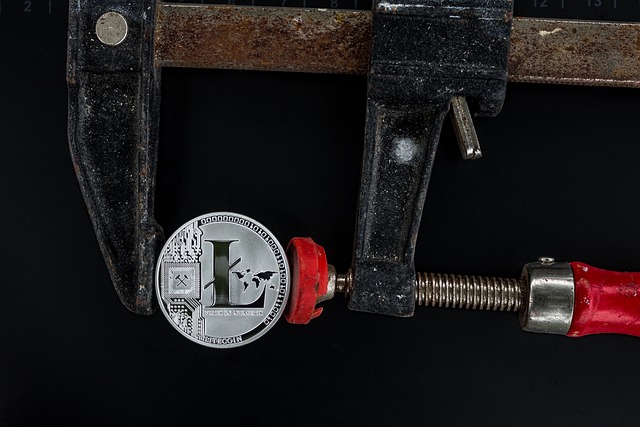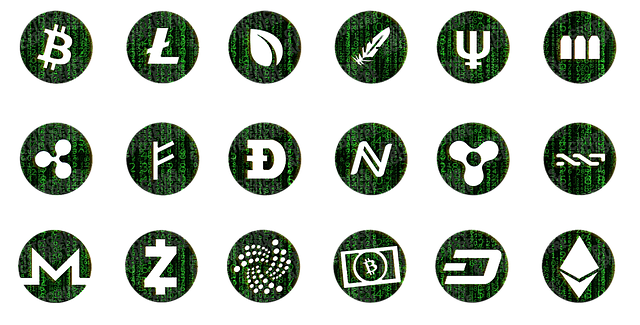Litecoin faces scalability challenges due to increasing popularity and transaction volumes. Limited block size slows processing, raises fees, and causes confirmation delays. Its proof-of-work algorithm consumes significant energy. Developers are exploring solutions like larger blocks, more efficient consensus mechanisms, off-chain scaling (e.g., Lightning Network), and blockchain sharding to enhance capacity and address these issues. Off-chain technologies promise faster transactions, lower costs, and improved privacy without straining the main chain. The future of Litecoin depends on adapting and implementing these scalability solutions while maintaining security through enhanced cryptography and decentralized network architectures.
“Litecoin, a popular cryptocurrency, faces scalability challenges that hinder its widespread adoption. This article explores potential solutions to enhance Litecoin’s capacity and speed. From understanding current bottlenecks to examining innovative protocols like blockchain sharding and Lightning Network integration, we delve into off-chain solutions and future protocol upgrades. Additionally, security considerations are addressed, highlighting the importance of a balanced approach to scalability for Litecoin’s long-term success.”
- Understanding Litecoin's Current Scalability Challenges
- Exploring Existing Solutions and Their Limitations
- Blockchain Sharding: A Potential Game-Changer for Litecoin
- Lightning Network Integration: Speeding Up Transactions
- Off-Chain Solutions: Enhancing Privacy and Efficiency
- Future Protocol Upgrades: Optimizing for Scalability
- Security Considerations in Scaling Litecoin
Understanding Litecoin's Current Scalability Challenges

Litecoin, like many cryptocurrencies, faces significant scalability challenges as its popularity and transaction volumes grow. One of the primary issues is the limited block size, which restricts the number of transactions that can be processed in a single block. This leads to slower confirmation times and higher fees during periods of high network congestion.
Additionally, Litecoin’s proof-of-work consensus algorithm, while secure, requires substantial computational power, leading to energy consumption concerns. To address these challenges, developers and the Litecoin community are exploring various solutions, including implementing larger block sizes, transitioning to more energy-efficient consensus mechanisms, and integrating off-chain scaling technologies to enhance the network’s ability to handle increased transaction demands efficiently.
Exploring Existing Solutions and Their Limitations

Litecoin, like many cryptocurrencies, faces challenges in terms of scalability. Existing solutions have emerged to address this issue, but they each come with their own constraints. One prominent approach involves off-chain scaling techniques, such as Lightning Network, which enables fast and low-cost transactions outside the main blockchain. However, these solutions often rely on centralized nodes, raising concerns about security and accessibility for all users.
Another widely discussed strategy is layer-2 protocol upgrades. These enhancements aim to increase transaction throughput by offloading some processing from the main Litecoin network. While promising, their effectiveness depends on widespread adoption, and they may not fully resolve issues related to finality and inter-chain compatibility. Understanding these limitations is crucial in evaluating the viability of current solutions for improving Litecoin’s scalability and ensuring its future growth.
Blockchain Sharding: A Potential Game-Changer for Litecoin

Litecoin, like many other cryptocurrencies, faces scalability challenges as its network gains more users and transactions. One promising solution to this issue is blockchain sharding. This technology involves dividing the Litecoin blockchain into smaller, manageable parts called shards, each responsible for processing a specific set of transactions. By doing so, sharding can significantly increase the throughput of the network while maintaining decentralization.
Each shard operates independently, allowing for parallel processing and reducing the load on individual nodes. This approach is particularly beneficial for Litecoin as it enables faster confirmation times for transactions and opens up opportunities for enhanced protocol enhancements. With proper implementation, blockchain sharding could be a game-changer for Litecoin, ensuring it remains competitive in the ever-evolving cryptocurrency landscape.
Lightning Network Integration: Speeding Up Transactions

The Lightning Network, a groundbreaking layer-2 solution, has the potential to revolutionize Litecoin’s scalability and transaction speed. By creating an off-chain payment channel, this network enables fast and low-cost transactions between users, significantly improving the overall performance of the Litecoin blockchain. When integrated, it can handle millions of transactions daily without overwhelming the main chain, ensuring that Litecoin remains a viable alternative to Bitcoin for everyday payments.
This technology allows for near-instant transfer of assets, reducing the need for lengthy confirmation times. With Lightning, users can send and receive Litecins with minimal fees, making microtransactions more feasible and attractive. As a result, Litecoin’s transaction throughput could increase dramatically, catering to the growing demand for fast and efficient peer-to-peer payments.
Off-Chain Solutions: Enhancing Privacy and Efficiency

Litecoin, like many other cryptocurrencies, faces scalability challenges that affect both transaction speed and privacy. Off-chain solutions offer a promising path forward for enhancing efficiency while maintaining the core principles of blockchain technology. These solutions leverage external systems to process and validate transactions, reducing the load on the main Litecoin network.
One prominent off-chain solution is Lightning Network, which enables instant and near-free microtransactions outside the main blockchain. This not only speeds up transaction times but also preserves the privacy of users by keeping sensitive data out of the public ledger. Other innovations, such as sidechains and trusted execution environments, further augment Litecoin’s scalability by allowing for secure, off-chain asset transfers and smart contract executions, respectively. These advancements collectively point towards a future where Litecoin can handle a larger volume of transactions with improved privacy and reduced costs.
Future Protocol Upgrades: Optimizing for Scalability

The future of Litecoin lies in its ability to adapt and evolve, especially regarding scalability solutions. Protocol upgrades are a strategic focus for developers aiming to enhance the network’s performance and keep up with growing demand. By optimizing key aspects, such as transaction processing speed and block size, future protocol enhancements will play a pivotal role in making Litecoin more scalable.
These upgrades could involve implementing new consensus algorithms or altering existing ones to reduce latency and increase throughput. Additionally, introducing off-chain solutions, like Lightning Network integration, can further expedite transactions, ensuring Litecoin remains competitive in the blockchain space. Such strategic moves are essential to maintain Litecoin’s appeal and position as a viable alternative to Bitcoin, catering to the increasing need for faster and more efficient transactions.
Security Considerations in Scaling Litecoin

As Litecoin gains popularity and its network handles an increasing number of transactions, ensuring security becomes paramount for its scalability. With any scaling solution, there are potential risks and vulnerabilities that must be addressed to protect users and maintain the integrity of the blockchain. One of the primary concerns is the potential increase in computational power required as transaction volume grows, making it more attractive for malicious actors to launch attacks.
Implementing security measures that can keep pace with scalability is crucial. This includes enhancing cryptographic algorithms, improving node security through updated protocols, and promoting best practices among users and developers. Additionally, decentralized network architectures and robust consensus mechanisms must be maintained or enhanced to ensure Litecoin’s long-term security as it scales, ensuring the protection of funds and data for its growing user base.
Litecoin’s journey towards scalability can be greatly enhanced through a combination of innovative solutions, including blockchain sharding, Lightning Network integration, off-chain processing, and future protocol upgrades. By addressing current challenges and leveraging these advancements, Litecoin has the potential to become more efficient, secure, and user-friendly in the digital era. These steps are crucial for maintaining Litecoin’s relevance and competitiveness within the cryptocurrency landscape.





Leave a Reply